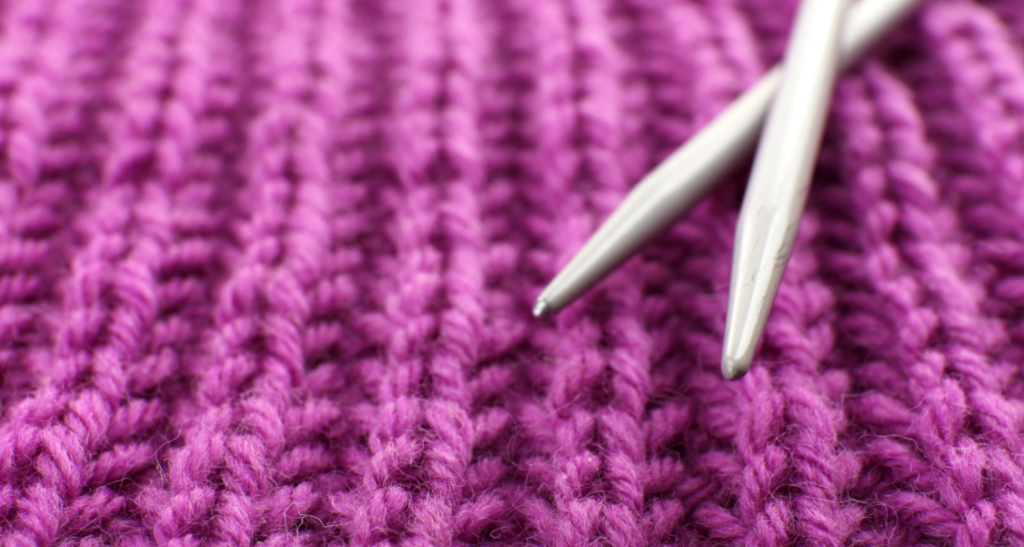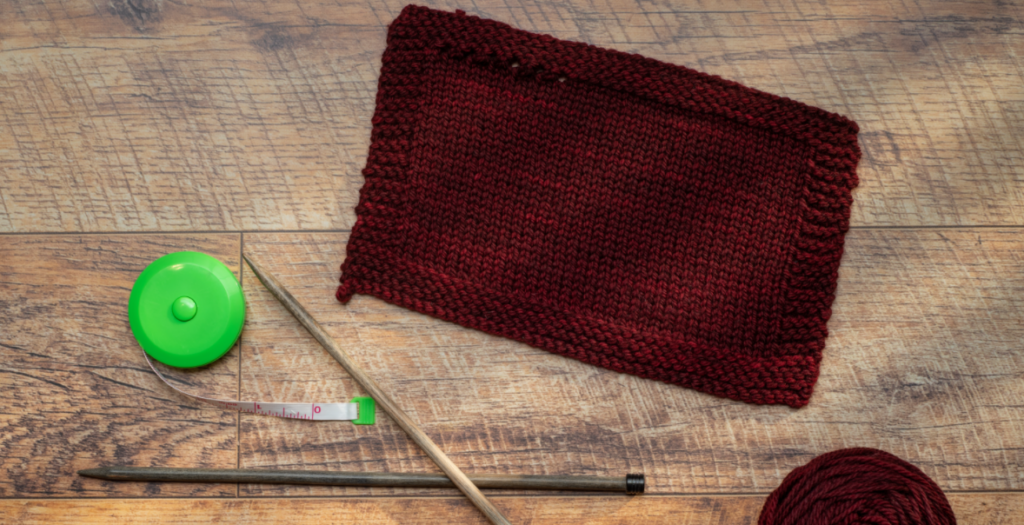
A "swatch" is a term that's deeply woven into needlework terminology, but one that's not immediately obvious to the novice knitter. Whether you're struggling to master the art of knitting a swatch or simply not sure why you would need one in the first place, Ajanta Studios are here to give you some much needed reassurance on the matter.
What Is A Test Swatch?
A swatch is a small, rectangular-shaped piece of knitted fabric that you are going to test using your particular yarn of choice. It is used to test the gauge - which is the number of stitches per inch, so you can align the gauge of the pattern with the swatch gauge. The swatch is also great for you to work out if you're going to like the yarn you'll be using and to determine if it's suitable, whether it will bleed, and how it feels and handles.
Once you're done knitting your swatch and you're happy with everything, you won't need it again, but it is very useful to ensure that there aren't any unwelcome surprises when it comes to creating your larger knitting project. By using a swatch you can work out how an item of clothing or similar accessory is meant to be knitted, helping you create something that's true to size and fits correctly.
Some items, such as scarves and blankets, won't require the creation of a test swatch. This is because dimensional accuracy for these accessories isn't as important as it is for other types of garments. So making a swatch is something you can skip here and you'll be able to get started on your main project without one.

How To Create A Test Swatch
#1. Firstly refer to the pattern gauge and cast on the necessary stitches required. It is recommended that you apply two stitches to measure the right amount of stitches that are in the middle of edge stitches.
#2. Knit the number of rows outlined and add a few extra before you bind off. Count the number of stitches in 4 inches and look over a few places to get an idea of an average. This is the row gauge, and although it's not crucial, ensure that you have roughly the same number of stitches and rows in 4 inches as written in the pattern instructions.
#3. Wait, what if I have too many stitches!? Don't worry, simply try again with a bigger needle if you have too many and a smaller needle if you have too few. More complicated projects may require a few swatches to get it right, but you'll be thankful once you have a perfect finished and fitted project.
#4. If the fit really matters for your project, you may want to block your swatch before you measure as blocking can significantly influence the knitted fabric. This is a great thing to do if you're making a fitted jumper or similar garment where you want to achieve that perfect fit.